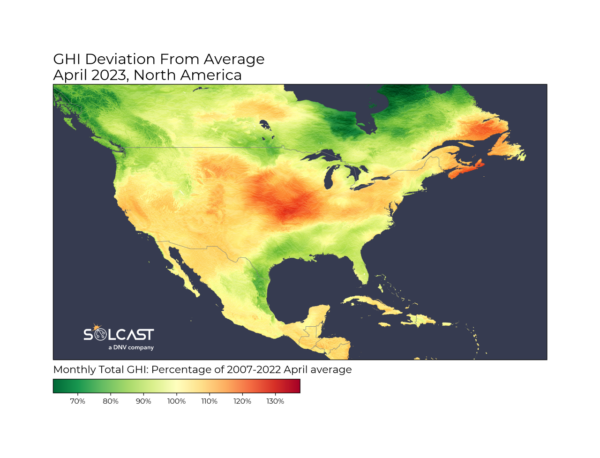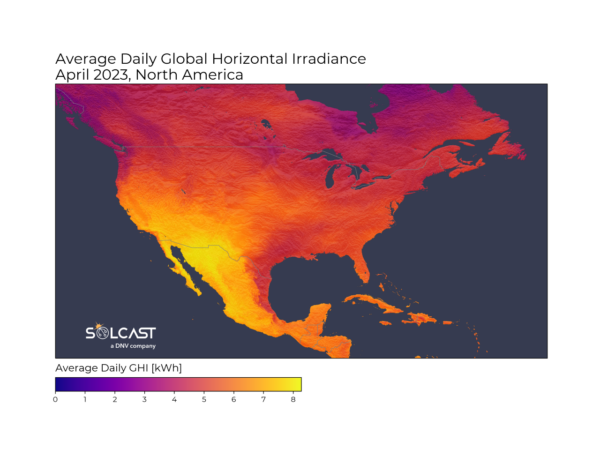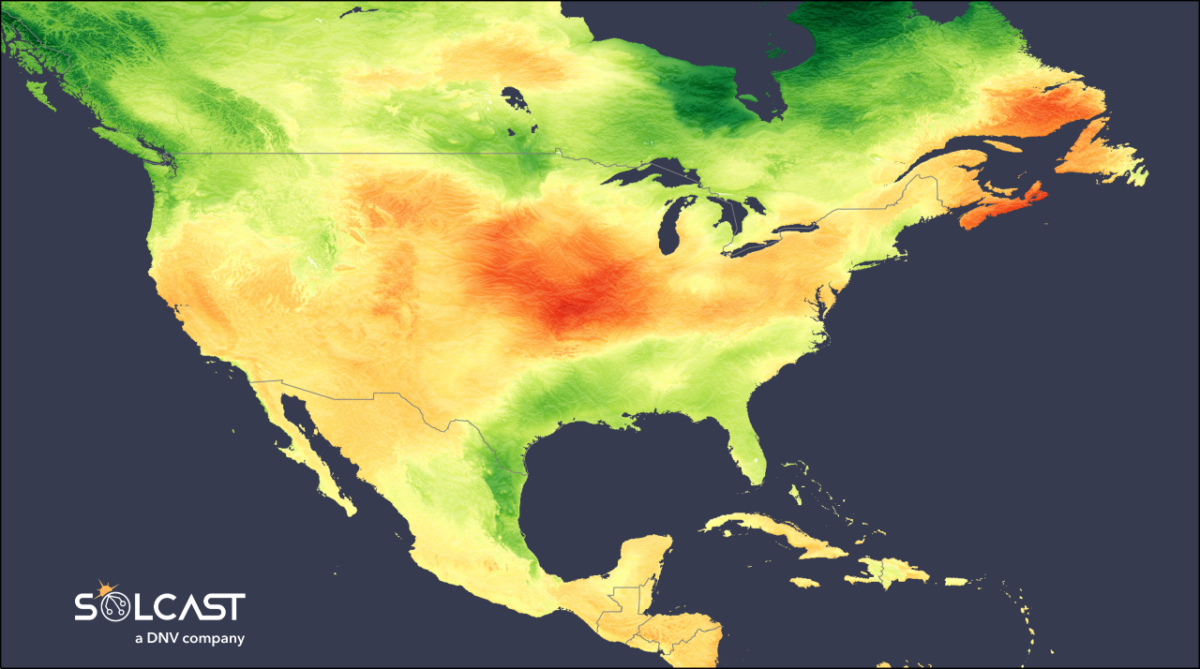During April, most of the lower 48 US states and Mexico saw solar irradiation above climate normals, due to cloud-bearing, low-pressure system activity being more focused over Canada and the Gulf Coast, according to data collected by Solcast, a DNV company, via its Solcast API Toolkit.
Positive departures from normal April irradiation benefitted solar producers from California, Baja California and Sonora right across the continent to Pennsylvania, New Jersey and Maine. The anomaly reached as high as 25% above normal over the Midwest, with larger areas seeing irradiation 5 to 10% above normal.

In contrast, most of Canada had less irradiation than normal during April due to a focus of cloud-bearing, low-pressure systems from the Pacific extending through Canada to Newfoundland. This northward focus of the low-pressure systems was driven in part by the “blocking” effect of high-pressure systems off the coast of California, diverting low-pressure systems further north. As a result, this trans-Canadian region, which also extended over some northern US states, saw irradiation departures as much as 30% below the April normal through northern parts of British Columbia, Ontario and Quebec.
The Gulf Coast region was a secondary focus of low-pressure systems, causing moist oceanic tradewinds to bring increased cloud cover, especially during the second week of April. As a result, irradiation was down 10 to 15% on April normals from Florida, through Louisiana and southern Texas, and into Coahuila, Mexico.
West and southwest regions still topped irradiation totals for April
Despite these regional departures from April normals, the drier and sunnier western and southwestern regions still topped the list for the total irradiation received during April. These regions, being both further south and having drier conditions, typically experience the highest average daily insolation due to longer days with less cloud.

Solcast produces these figures by tracking clouds and aerosols at 1 to 2 km resolution globally using satellite data and proprietary AI/ML algorithms. This data is used to drive irradiance models, enabling Solcast to calculate irradiance at high resolution, with typical bias of less than 2%, and also cloud-tracking forecasts. This data is used by more than 300 companies managing over 150 GW of solar assets globally.
The views and opinions expressed in this article are the author’s own, and do not necessarily reflect those held by pv magazine.
This content is protected by copyright and may not be reused. If you want to cooperate with us and would like to reuse some of our content, please contact: editors@pv-magazine.com.



3 comments
By submitting this form you agree to pv magazine using your data for the purposes of publishing your comment.
Your personal data will only be disclosed or otherwise transmitted to third parties for the purposes of spam filtering or if this is necessary for technical maintenance of the website. Any other transfer to third parties will not take place unless this is justified on the basis of applicable data protection regulations or if pv magazine is legally obliged to do so.
You may revoke this consent at any time with effect for the future, in which case your personal data will be deleted immediately. Otherwise, your data will be deleted if pv magazine has processed your request or the purpose of data storage is fulfilled.
Further information on data privacy can be found in our Data Protection Policy.